There are brands out there, bigger than the products they make. They make good stuff, of course, but a company becomes iconic when its products, brand and logo create a feeling—even a passion—in the people who use them or aspire to use them.
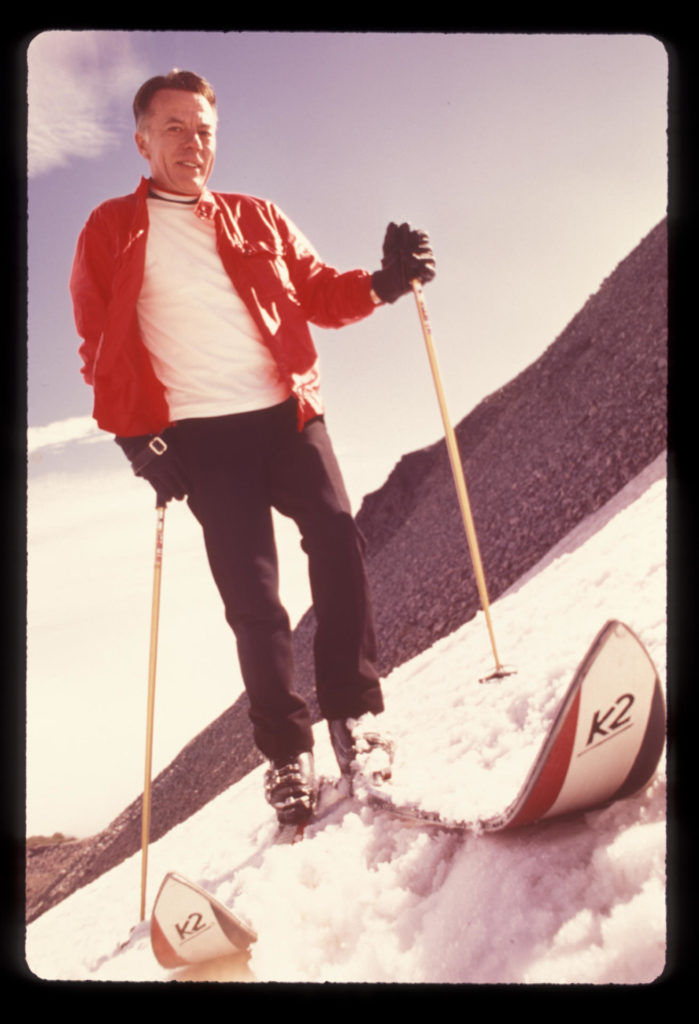
The fact is, making good things is no guarantee of success. It helps, of course, but creating a feeling, a culture, around the product is also important. A while back, two passionate guys named Steve—Jobs and Wozniac—built a computer in a California garage. Today Apple is the biggest company in the world, something that happened in no small part because of the legions of loyal Mac addicts.
On an island outside of Seattle, Washington, a guy named Bill Kirschner took some time away from his main job, building animal cages, to fiddle with a new idea, fiberglass skis. Fifty years later, K2 is one of the biggest ski makers on the planet (it may well be the biggest, but it’s hard to tell in a time when all the major manufacturers are part of international holding companies), and arguably the one with the clearest—and most clever—identities.
In K2’s case, “fun” has always been part of the success story. Having the biggest names on your product never hurts, and K2 has always had the top skiers in its ranks. But early on, it had a flair for fun promotions, from delightfully different ads, posters and catalogues, to van tours by top skiers to resorts around the U.S. cameras in tow. These could be best described as roving cocktail parties on snow (K2 often gets credit, or infamy, depending on your viewpoint, for having hosted the world’s first wet T-shirt contest).
In the 1980s, skiers turned away from the stiff confines of ski areas and looked to the mountains beyond. The momentous shift in consciousness was summed up rather brilliantly in the 1989 Greg Stump film, “Blizzard of Aahhs.” It was no surprise the three main skiers in the film were on K2s—and each remained household names in the ski community for the next 20 years.
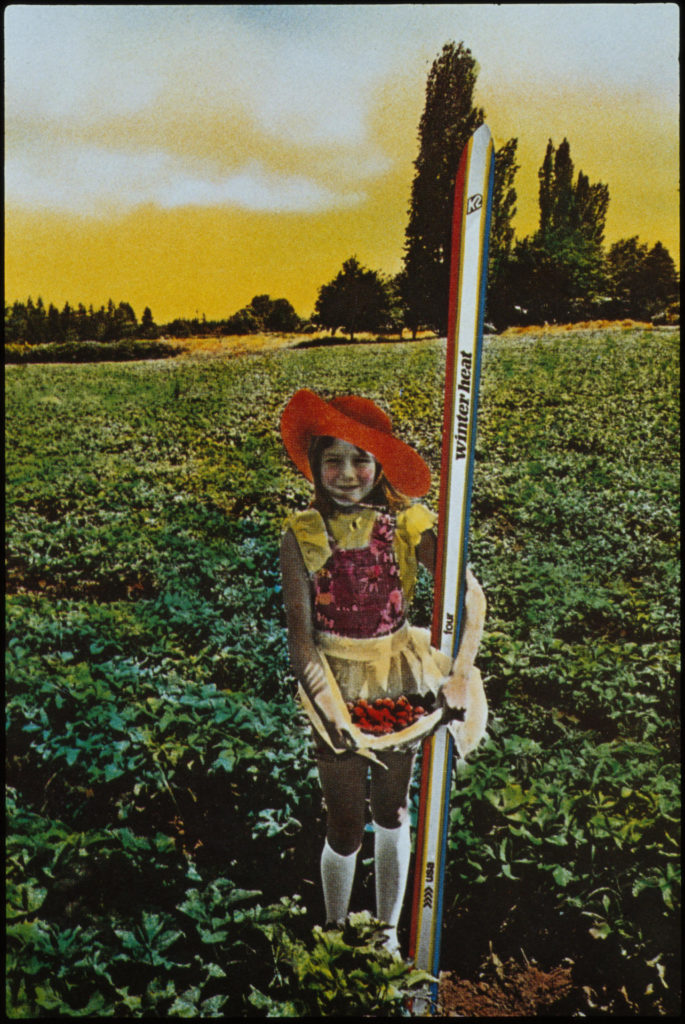
The “K2” name comes from the Kirschner brothers, Bill and Don, although the connection with the K2 mountain was not coincidental, either. Don mostly focused on the existing Kirschner Industries.
Located on Vashon Island in Puget Sound, the company produced fiberglass products including dog cages (a big seller, apparently) and plastic skeletons.
Bill, however, was a skier, an engineer, and a tinkerer. Building excellent dog cages obviously didn’t entirely capture his attention, because on family ski trips in the Pacific Northwest in the early 1960s, part of the fun was trying out dad’s new fiberglass ski creations.
At the time, the best-selling skis in the U.S. were metal and made by Head Skis. They were long, heavy and stiff. Bill Kirschner’s skis were light and responsive—even if the early, family-tested prototypes tended to fly apart.
“He’d build the skis, and we’d go up to Crystal Mountain and test them,” his son Bruce later wrote. “Sometimes we’d get one run on them before the tops would come off, which is what usually happened. The contact cement wouldn’t hold, and it would peel off, and he would come home and play with the design a little more. Then we would go up and test them again, continually skiing on whatever he had tinkered with that week. It was fun.”
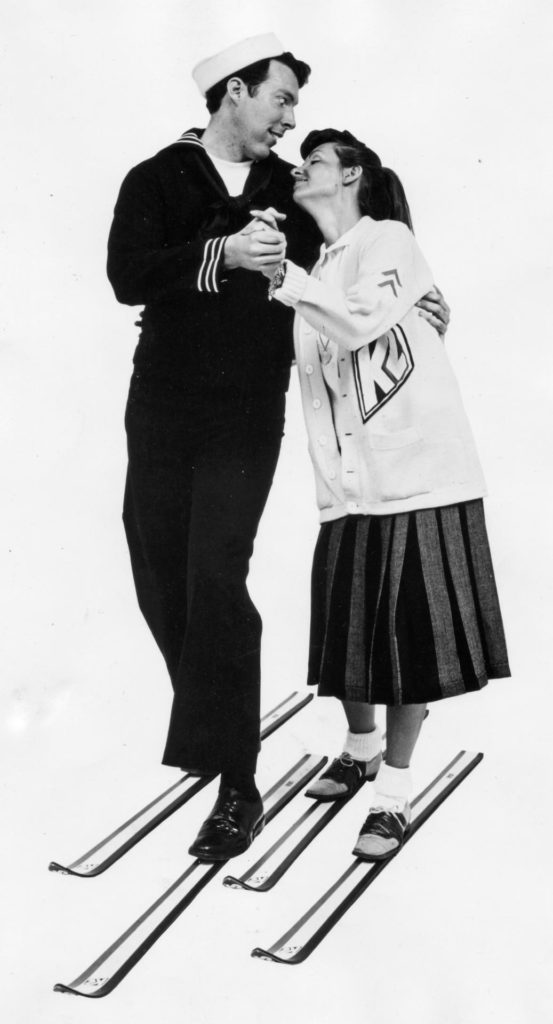
Eventually, the skies stayed together. What he finally came up with was a fiberglass wrapping around a wood core that was then baked—the foundation for today’s Triaxial technology, which braids fiberglass around wood cores. Light and responsive, the skis were completely different from then-popular metal skis.
They also quickly became popular. Bill Kirschner made a deal with a Seattle ski distributor to begin selling K2 branded skis. In 1964, they delivered 250 pairs; in 1965, 1,600. In 1967 it was clear they were going to be successful, so the K2 Ski company was officially established.
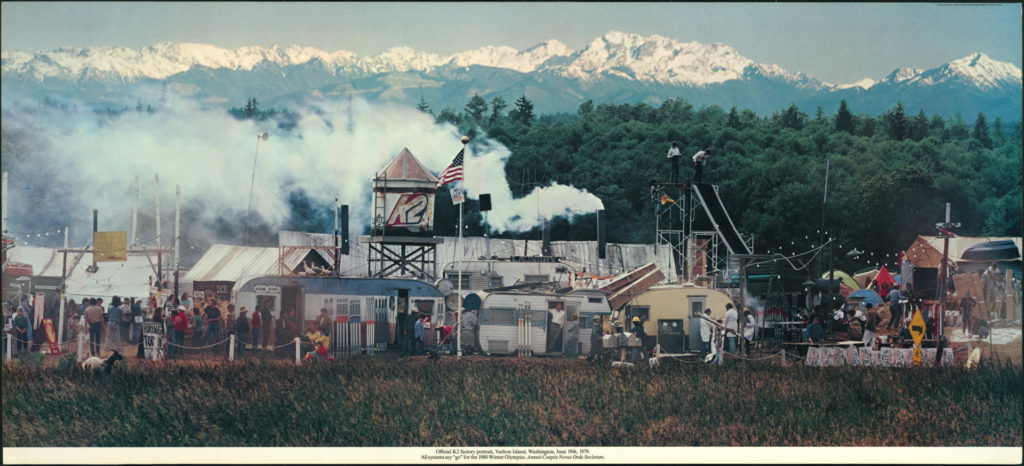
The fiberglass ski was also established as the way of the future—so much so that rumor has it Howard Head, anxious to move from metal skis to fiberglass, tried to buy the company (the quiet Bill Kirschner, it is also said, kept gently rebuking offers until Head finally gave up).
Two people step into the story about this time. One was ski racer Marilyn Cochran who was given her first pair of K2s in 1967. “I loved them,” she said. In 1969, racing on the World Cup circuit, she never actually won a Giant Slalom (GS) race, but was more consistent than anyone else, and she became the first American ever to win the World Cup title, and the first to win on an American ski.
The second was Terry Heckler, owner of the Seattle-based Heckler Associates marketing firm. Most ski-oriented histories look primarily at the famous skiers K2 has had on its roster, but a whole lot of credit has to go to Heckler. He unified the look of all the models, suggested the red-white-and-blue colors that defined the brand for decades and refined the logo to the look that has remained to this day.
He had a firm grasp of the offbeat: an Uncle Sam poster that read, “K2 Wants You,” a barn painted “Chew K2” for print advertising; a yearbook-themed catalog for the 1970s with purposely incongruous pairings, such as the slicked-hair “Salvatore” holding a pair of Cheeseburger Deluxe skis (“Sal is unusually stable at high speeds, and is known as a real mover,” read the copy).
A rural, weathered K2 gasoline station with ski-shaped pumps, a poster of apes around a giant ski tip, echoing “2001: a Space Odyssey.” There was always with some connection to the product, but always delightfully weird.
The racing connection continued into the 1980s, with sponsorship of racer Spider Sabich, and later the medal-winning Mahre twins, Phil and Steve. Today, though, the company makes no racing skis at all. It added snowboards in 1987, and remains successful in that area.
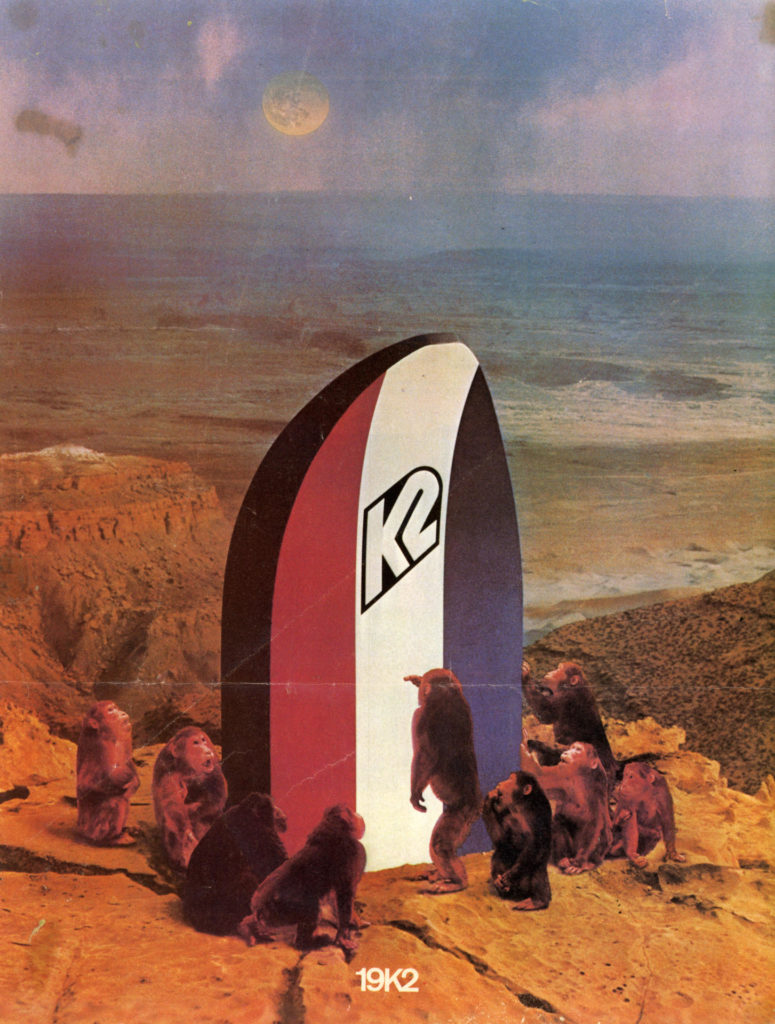
It was the first to produce telemark-specific skis in the 1990s, guided by ski legend and K2 manager Mike Hattrup. But they didn’t just build a telemark ski; they turned the tradition of skinny skis and flimsy leather boots on its head with wider, more aggressive skis ideal for the emerging plastic boots, bold graphics and names such as Piste Stinx and Piste Off.
The faces associated with the skis were also changing, from ’80s and ’90s legends such as Scot Schmidt and mohawked Glen Plake, and names such as Brad Holmes, Kent Kreitler, Sean Pettit, Andy Mahre and especially Seth Morrison and Shane McConkey. Morrision is arguably one of the finest skiers in the big mountain/free skiing world, something K2 will very happily tell you about (having given him a series of signature skis since 1997, while the K2 “family company” Full Tilt has a Morrison boot).
McConkey defined the idea of extracting joy from skiing and had a flair for tinkering himself. “Shane’s personality was a natural extension of the K2 brand: fun and inviting, with a sense of humility—unique and unpredictable,” said Jeff Merchura, vice president of global marketing at K2. He had been working with Volant, a smaller ski maker, on increasingly wide and reverse-cambered skis—meaning bent in the “wrong” way. He illustrated this by skiing in Alaska, on big mountains, on waterskis mounted with ski bindings.
Although he was tragically killed in a BASE jump accident in 2009, he did see his creation, the Pontoon, join the K2 lineup that year. This super-fat, rockered ski—the tips and tails both turned up—was a revolution. It made skiing powder that much more fun—especially in places such as Japan, where it snows a lot.
Today every K2 ski, in fact, is rockered—powder skis more aggressively than hard snow models. But all have some turn-up at the ends. This, the company claims, makes for easier turn initiation, better skiing in cruddy or deep snow—and, again, just more fun.

Locally, too, the brand has long been active in the market. The first 500 skis were exported to Japan in 1972. During the ski boom years of the 1980s, Japan was hugely profitable for the company. And, says Hideaki Tanaka, President of K2 Japan, the wholly owned subsidiary, the same spirit as in the States is what has driven the success in Japan.
“Fun is what really describes the company,” he says “The very American style of fun, of being youthful, the fun graphics; people have always liked that about the skis.” He adds that youthful has nothing to do with age. Yuichiro Miura, the Alpinist and “Man Who Skied Down Everest” is part of the family, with his own signature ski in the lineup. Having watched him ski this year, I can attest the 79-year-old does in fact keep it young on the skis.
K2 Japan has done things in the K2 sprit, such as hosting the first-ever local Kamp K2, held this past April at the Kagura Ski Area. Held to mark the 50th anniversary, the days featured product tryouts, a barbecue and K2 snow sculptures in the day, major (and well-fueled) parties at night for Japan’s top skiers, ski writers and photographers.=
Today K2 owns a number of other brands, including Line, Völkl and Madshus skis, Ride snowboards, Atlas and Tubbs snowshoes and many other sporting brands. In turn, K2 Sports (as it officially known) is owned by Jarden Corporation, a holding company that specializes in sports and outdoor firms.
Don’t worry, though; K2 operates largely independently—and, as early as 1969, the Kirschner brothers had brought in an outside owner to gain the capital needed for expansion. All of the companies under K2 likewise have the freedom to do things their own way. Which means it’s very likely, in the near future, there will be some new, K2-quirky promotion being used to help sell a new, innovative family of K2 skis.
K2 KRONOLOGY
Timeline of key K2 moments over the past 50 years.
- 1962 Bill Kirschner builds his first pair of skis on Vashon Island, Washington (USA).
- 1964 First commercial sales of K2 skis; 250 pairs sold to A&T, a Seattle distributor.
- 1965 K2 debuts the world’s first wrap-around steel-edged ski; 1,600 pairs are built and sold at $80 retail.
- 1967 K2 separates from Kirschner Manufacturing.
- 1969 Marilyn Cochran becomes the first American to win a World Cup title—on K2 skis. K2 is sold to diesel engine manufacturer Cummings, although management remains unchanged.
- 1970 The legendary red, white and blue K2 Comp is released—and the company becomes the top maker in the US.
- 1971 Phil and Steve Mahre join K2; they will later win numerous World Cup titles and gold and silver medals, respectively, at the Sarajevo Olympics. An expansion at the Vashon Island plant increases capacity to 120,000 pairs of skis annually. Filmmaker Dick Barrymore releases “The Performers,” a movie following the K2 Performers team on their travels across America.
- 1972 Hot-dogger Wayne Wong is sponsored by K2; the company enters Japan with 500 pairs of skis, and Europe through a limited distributorship.
- 1973 K2 markets it first ski boot, an unusually high, orange design better known for its looks than performance. K2 water skis go on sale; they ski well, but are “neutrally buoyant”—they barely float. K2-sponsored Spider Sabich dominates the World Cup.
- 1974 Jean-Claude Killy is sponsored by K2. In an Aspen bar, K2 hosts a wet T-shirt contest that gets the brand into Playboy—and angers Cummings management. K2 begins distribution of Marker bindings.
- 1976 K2 releases the Ballet and 244 skis; with turned-up tails, these models pre-dated today’s twin tip skis. Sitca, a Seattle-based investment team, buys the company.
- 1977 K2 sells skateboards in Japan.
- 1978 K2 begins sales of cross-country skis. It also becomes the first company to eliminate base grooves from their skis.
- 1979 The Vashon Island facility employs 750. Dick Barrymore’s “Assignment: K2,” featuring Killy, Wong and other K2 skiers.
- 1980 K2 is the official ski of the Lake Placid Winter Olympics; Phil Mahre wins the silver medal in slalom.
- 1981 Phil Mahre wins his first World Cup overall title. The oil crisis hits K2, and skiing, hard; the company shrinks to about 125 employees.
- 1982 Steve Mahre becomes World Cup giant slalom champion, while Phil wins his second World Cup overall title.
- 1983 Phil Mahre wins his third World Cup overall title. A young K2-sponsored skier from Montana, Scot Schmidt, appears in his first ski film.
- 1984 The Mahre brothers win the gold and silver medals at the Sarajevo Winter Olympics. 1985 Anthony Industries purchases K2 from Sitca.
- 1987 K2 creates 2,000 snowboards.
- 1988 Greg Stump’s “Blizzard of Aahhhs” is released, starring K2 skiers Mike Hattrup, Glen Plake and Scot Schmidt. It remains one of the seminal films of big mountain/freestyle skiing.
- 1989 Noted big mountain skier Doug Coombs joins K2.
- 1990 The K2 Extreme is released, and bought by everyone who watched “Blizzard of Aahhhs.” K2 boarder Dan Donnelly appears in Greg Stump’s “Dr. Strange Glove,” the first for a boarder in a major ski movie. Kim Reichhelm joins K2.
- 1991 Doug Coombs wins the World Extreme Skiing Competition. The K2 Velocity is given the most radical sidecut of any ski.
- 1992 Seth Morrison begins his relationship with K2. K2 Snowboarding riders Shawn Farmer and Nick Perata appear in Fall Line Films’ “Riders on the Storm.”
- 1993 Doug Coombs again wins the World Extreme Skiing Competition. K2 begins production of inline skates. K2 Snowboarding releases the four-hole binding pattern which becomes the industry standard.
- 1994 The K2 Big Kahuna is released as one of the first fat powder skis. K2 Snowboarding comes to Japan. Kim Reichhelm convinces K2 to begin the design of women’s-specific skis.
- 1995 The K2 Four ski is resurrected with the world’s first use of a piezo-based vibration-dampening technology. Bode Miller wins the Junior Olympic Super G by more than a second on the ski. Kim Reichhelm wins all three international extreme ski competitions. K2 releases the Clicker, developed with Shimano as the world’s first step-in snowboard binding. After just one year, K2 sells 1.8 million pairs of inline skates.
- 1996 The K2 Xplorer—with the then-whopping waist dimension of 75 mm.—is a mainstay at steep and deep resorts. K2’s telemark-specific ski line is released.
- 1997 K2 rider Daniel Franck wins the snowboard halfpipe in the first Winter X Games. The K2 Factory Team, the first ever free-ski team, is created.
- 1998 Johnny Moseley wins gold in the Nagano Olympics on his K2 Winter Heats. Daniel Franck wins the snowboard halfpipe silver medal. K2 releases the Poacher, the first true twin-tip ski.
- 1999 K2 purchases Ride and Morrow snowboard companies, making the company the world’s second-largest snowboard maker.
- 2003 K2 acquires the Tubbs and Atlas snowshoe brands. Snowboarder Gretchen Bleiler signs with K2, then wins the first of four X Games gold medals. Freestyle skier Andy Mahre, son of Steve Mahre, joins K2.
- 2004 The entire Factory Team takes part in a KISS-themed advertisement shoot; the company’s legal team pulls the ad after discovering the band has a full-time legal department just to deal with copyright infringements. K2 buys the boot molds for the Raichle Flexon.
- 2005 Shane McConkey signs with K2.
- 2006 K2 moves from Vashon Island to Seattle. The Pontoon, Shane McConkey’s reverse-camber, super-fat ski, goes on sale. K2 purchases Line skis. K2 Telemark evolves into the Backside division, moving to embrace Alpine Touring as well. The Full Tilt ski boot brand is introduced, based on the Raichle Flexon and newer technology.
- 2007 K2 is acquired by Jarden Corporation. Doug Coombs is killed in a guiding accident in France; the company honors his memory with the Coomba ski. Rocker technology is applied to snowboards with the Gyrator.
- 2008 Kamp K2 takes over Mt. Baker, Washington. Rocker technology is extended across many K2 snowboards and skis.
- 2010 For the first time ever, K2 sells more skis in Europe than the U.S. Kamp K2 moves to Austria; half the K2 athletes are stranded in Europe for nearly a month after the volcanic eruptions in Iceland.
- 2011 K2 Snowboarding debuts its integrated backcountry line, with everything from skins and probes to backpacks. All K2 skis have some form of rocker.
- 2012 K2 celebrates “50 Years of Serious Fun.” Kamp K2 marks the event with the first-ever party in Japan.





